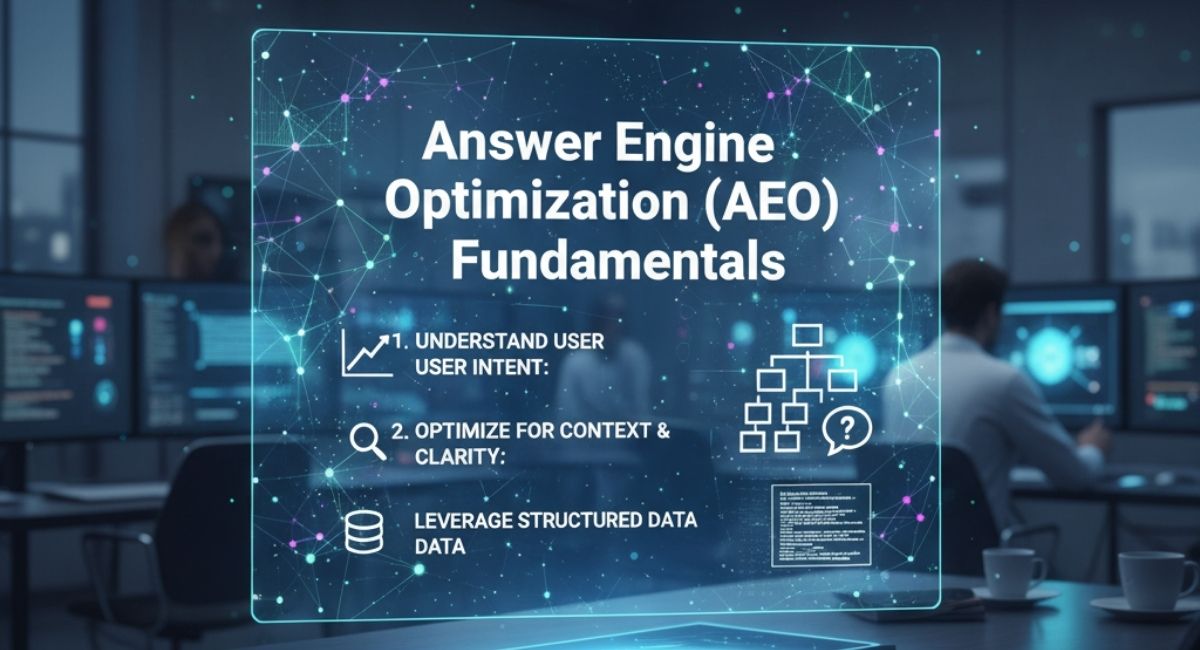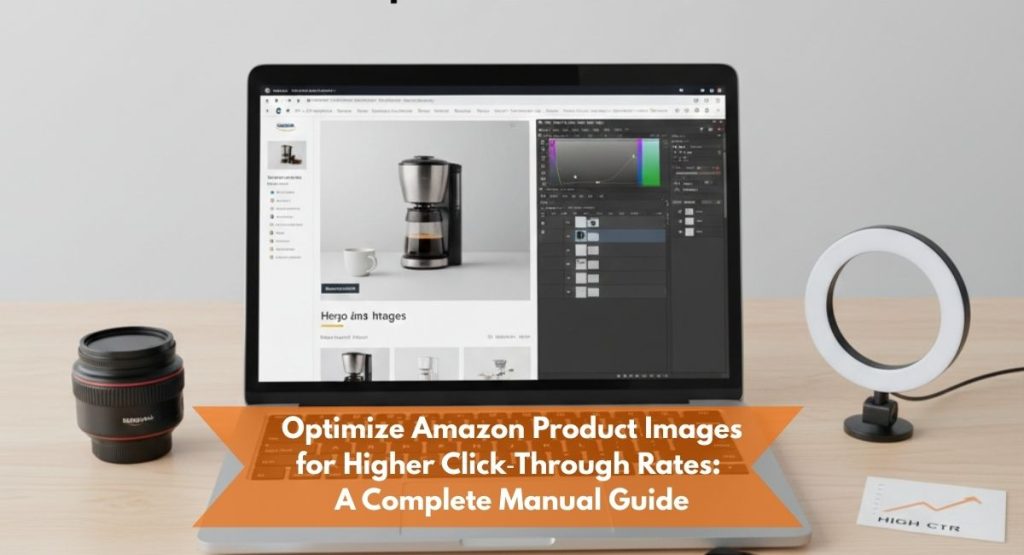The evolution of search has entered a new phase where direct, voice-based, and AI-driven responses dominate. Traditional SEO once focused on ranking web pages, but now, the spotlight has shifted to Answer Engine Optimization (AEO),the practice of shaping content to be easily understood and served by AI-powered systems like Google’s generative search, Bing Copilot, and ChatGPT’s web integration.
Businesses adapting early to AEO gain visibility in zero-click searches and featured snippets. If you’ve already explored topics like AI SEO, this guide expands on that knowledge by explaining how to prepare your site for answer-based queries and conversational AI ranking models.
What is Answer Engine Optimization (AEO)
Answer Engine Optimization is the process of structuring and crafting content so that it becomes the preferred source for AI systems when responding to a question. Instead of optimizing for clicks, you optimize for answers. These engines prioritize clear, verified, and context-rich information that aligns with user intent.
AEO focuses on:
- Conversational search queries (voice and chat-based)
- Featured snippet and zero-click SEO opportunities
- Machine-readable data (schema, entities, context)
- Factual consistency and semantic depth
While SEO focuses on ranking in search engine result pages (SERPs), AEO targets answer surfaces,places where users don’t necessarily click, such as Google’s “People Also Ask,” AI overviews, or voice assistant responses.
Why AEO Matters in the AI Search Era
The rise of generative AI and voice technology means more users are searching without typing traditional keywords. Queries are longer, context-rich, and often phrased as full questions.
Answer engines extract concise, accurate information rather than full articles. So, brands that fail to adapt will lose organic impressions. Incorporating AEO ensures your business appears as the authoritative source in AI-driven responses.
A study from BrightEdge in 2024 found that over 50% of organic impressions now occur in zero-click formats. Optimizing for AEO means competing for this silent but valuable exposure.
Core Principles of AEO
| Element | Description | Optimization Focus |
| Intent Mapping | Understanding the searcher’s true question and context | Use long-tail and conversational queries |
| Structured Data | Schema markup for entities, FAQs, and How-To content | JSON-LD schema integration |
| Content Clarity | Short, accurate, and authoritative answers | Clear definitions, lists, and step explanations |
| Credibility | Verified data, author expertise, and citations | Link to trustworthy external and internal sources |
| Contextual Linking | Linking relevant topics for depth | Add semantic connections through internal pages |
Building an AEO-Ready Content Framework
To create AEO-friendly content, focus on question-based optimization. Think of how people phrase questions to AI tools. For example:
- “How does AEO differ from SEO?”
- “What is featured snippet optimization?”
- “How can I optimize for zero-click results?”
Step 1: Identify Query Types
Divide queries into informational, transactional, and navigational categories. Most answer engine queries are informational, but transactional ones like “best AI SEO services near me” are growing.
Step 2: Structure for Quick Answers
Use a mix of paragraph and list formatting. The first 50–60 words of your section should directly answer the query before expanding into details.
Step 3: Add Contextual Schema
Use schema types like:
- FAQPage
- HowTo
- Article
- Products
This helps AI systems understand relationships and context better.
Step 4: Build Topic Authority
Cover related subtopics under one semantic theme. For instance, an article on AEO should also discuss featured snippets, voice search, entity-based SEO, and zero-click results to establish topical authority.
Step 5: Maintain Human Readability
Avoid keyword stuffing or robotic phrasing. Conversational clarity is more valuable than rigid optimization in modern AI search ecosystems.
AEO vs. Traditional SEO
| Comparison Factor | SEO | AEO |
| Primary Goal | Rank web pages | Provide instant answers |
| Metric Focus | Clicks, CTR, dwell time | Visibility in AI responses |
| Optimization Level | Keywords, backlinks | Entities, context, structured data |
| Output Type | SERP results | Voice/AI responses, featured snippets |
| Tools | Google Search Console, Ahrefs | Schema.org, NLP-based tools |
Traditional SEO strategies remain valuable, but integrating AEO means enhancing them with AI understanding. A perfect balance can be achieved by aligning on-page SEO techniques with semantic AEO structures. Businesses working with specialized teams like Maxim Blu’s SEO strategy experts can ensure both fronts are covered effectively.
Key Techniques for Effective AEO
Optimize for Featured Snippets
Create short, factual answers followed by supporting paragraphs. Use headers formatted as questions (H2 or H3 tags). Featured snippet optimization naturally aligns with AEO.
Voice Search Alignment
Voice queries are longer and more conversational. Incorporate who, what, where, when, how questions and use natural language.
Build Entity-Based Relevance
AI search engines understand content through entities (people, places, concepts). Strengthen this by connecting related entities using internal links and structured markup.
Use Clear Formatting
Readable layouts are favored by AI parsers.
Use:
- Numbered steps for tutorials
- Bullet points for clarity
- Tables for factual data
Content Freshness and Accuracy
Answer engines prefer updated sources. Keep your data and statistics recent, and maintain a consistent content refresh cycle with website management services.
Integrating AEO into Web Development
AEO is not just a content task; it’s built into your site architecture and technical design. When working with expert web development teams, ensure your backend supports schema, fast load times, and crawlable markup.
Key aspects:
- Clean HTML structure
- Fast page speed
- Mobile-first design
- Voice-readiness for accessibility
AEO-friendly web development connects content, schema, and UX design seamlessly. Every element,from metadata to menu structure,impacts how AI engines interpret site content.
AI Search Ranking Factors for AEO
AI search models don’t rely only on keywords. They assess:
- Entity accuracy: Does the content refer to recognized concepts?
- Source trustworthiness: Is the information verifiable?
- Semantic relationships: Are the connected topics contextually logical?
- User intent match: Does the answer reflect query tone and intent?
These ranking elements align with how AI assistants and large language models interpret information, forming a deeper level of SEO known as contextual intelligence.
AEO and Zero-Click SEO: The Connection
Zero-click SEO means your content appears as the answer without the user clicking through. It may sound like reduced traffic, but it drives brand exposure and trust-building. When your brand appears in AI summaries, users begin associating it with expertise.
The key is to balance informative excerpts with opportunities for deeper engagement. For example, providing a concise definition but inviting users to explore your detailed guides or related services creates a healthy visibility loop.
For more insights, you can explore how zero-click AI summaries affect business visibility in the article “Zero-Click AI Summary Tips.”
Common AEO Challenges and How to Overcome Them
| Challenge | Solution |
| Ambiguous intent queries | Use NLP tools to analyze context |
| Outdated schema | Regularly update JSON-LD markup |
| Content overlap | Merge related topics for stronger entity mapping |
| Thin answers | Expand with supporting data and credible references |
| Low voice ranking | Improve pronunciation clarity with structured Q&A |
A successful AEO strategy blends content depth and technical precision. Combining both ensures your brand remains visible across human and AI-driven searches.
Content Writing Strategies for AEO
AI engines prefer content that sounds human, consistent, and authoritative. This makes copywriting quality an essential part of AEO. Partnering with specialized copywriting services helps maintain tone consistency and clarity while embedding semantic depth.
Effective AEO writing includes:
- Writing with conversational flow
- Breaking answers into digestible segments
- Supporting claims with trusted data
- Maintaining topical hierarchy (main concept → subtopics → examples)
Tools and Metrics for Measuring AEO Success
Track your AEO progress with both SEO and AI visibility metrics:
| Tool | Purpose |
| Google Search Console | Track “People Also Ask” and snippet visibility |
| AnswerThePublic | Identify conversational queries |
| Semrush Topic Research | Build topical maps |
| Schema Validator | Verify structured data |
| Bing Webmaster Tools | Monitor voice query insights |
You can also measure AI ranking by checking how often your content appears in:
- Google’s AI Overviews
- Bing Copilot summaries
- Chat-based responses from integrated search tools
Keeping AEO Aligned with Evolving AI Search
Search models continuously adapt. To stay ahead:
- Monitor new SERP features (e.g., AI Overview sections)
- Refresh schema and metadata quarterly
- Expand entity relationships as new trends arise
- Conduct AEO audits similar to SEO audits
If you already run SEO audits, integrating AEO checks within them can save effort. Consider professional guidance like technical SEO assessments to maintain an optimized structure.
Practical Checklist for AEO Implementation
- Identify 30+ question-based queries per topic
- Create short answer boxes (40–60 words each)
- Apply FAQ and HowTo schema
- Link contextually to relevant services or pages
- Update factual information every quarter
- Track featured snippet appearance monthly
Regular maintenance ensures your AEO content stays discoverable by AI engines and relevant to human readers.
Future of AEO and AI Search Interaction
As AI search systems evolve, Answer Engine Optimization will merge with Generative Experience Optimization (GEO),a more advanced layer focusing on contextual answers inside AI summaries. Brands that begin structuring their data now will benefit from algorithmic stability later.
The interplay between semantic SEO and AI-driven query understanding defines this next era. Businesses that align their strategy with AEO principles will continue to hold visibility even when traditional keyword ranking loses weight.
Final Thoughts
Answer Engine Optimization isn’t a temporary tactic; it’s the next step in how the web communicates information. By refining your site structure, writing style, and technical layers for AI interpretation, you prepare your business for the voice-first, zero-click world that’s rapidly becoming standard.
Whether you’re improving schema structure, enhancing voice query coverage, or crafting content designed for AI readability, applying these principles ensures long-term digital resilience.
For expert assistance in developing an AEO-aligned website and optimizing for AI-driven search, explore the comprehensive digital marketing and web solutions offered by Maxim Blu. Their specialized services,from web development to SEO strategy,can help position your brand at the forefront of AI-powered search.
Frequently Asked Questions (FAQs)
1. What is the difference between AEO and GEO?
AEO focuses on optimizing for direct answers, while GEO (Generative Experience Optimization) extends that idea into AI summaries, ensuring content is referenced and credited within generative results.
2. How do I know if my site appears in AI results?
Monitor AI-driven search engines like Bing Copilot and Google’s AI Overview. You can also test by phrasing conversational queries related to your niche.
3. Do featured snippets still matter for AEO?
Yes, featured snippets remain one of the most reliable signals of AEO success. They indicate that your content structure aligns with how AI systems retrieve and summarize answers.
4. Is AEO suitable for eCommerce websites?
Absolutely. eCommerce platforms benefit from AEO by optimizing product FAQs, comparisons, and reviews. Structured data helps answer engines display accurate product details instantly.
5. How often should I update my AEO content?
Update quarterly or whenever significant changes occur in your industry. AI systems prioritize current data and active sources.
6. Can AEO replace traditional SEO?
No, it complements it. AEO builds on SEO fundamentals by aligning content with AI interpretation rather than replacing keyword optimization completely.
7. What are zero-click searches in AEO?
Zero-click searches occur when the user gets an answer directly from search results without clicking. Optimizing for these helps your brand gain authority and visibility.
8. Does schema markup improve AI ranking?
Yes, schema markup enhances machine understanding. It helps answer engines recognize the purpose and context of your content more accurately.
9. How can small businesses start with AEO?
Start by identifying common customer questions, writing concise answers, and implementing FAQ schema. Tools like Google’s Structured Data Markup Helper can guide this setup.
10. What’s the role of AI SEO in AEO?
AI SEO tools help analyze patterns, detect entity relationships, and optimize for voice-based and AI-driven results,making them essential companions to your AEO efforts.
Embracing AEO today sets your digital foundation for tomorrow’s search landscape. When you combine structured optimization, strong copywriting, and strategic web development, your brand becomes naturally visible to both humans and AI. Partnering with Maxim Blu ensures you stay ahead in this evolving digital ecosystem.





